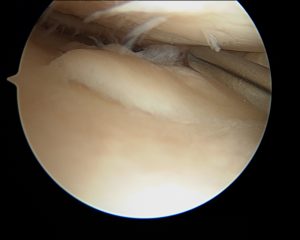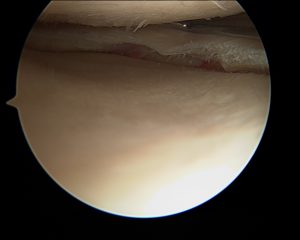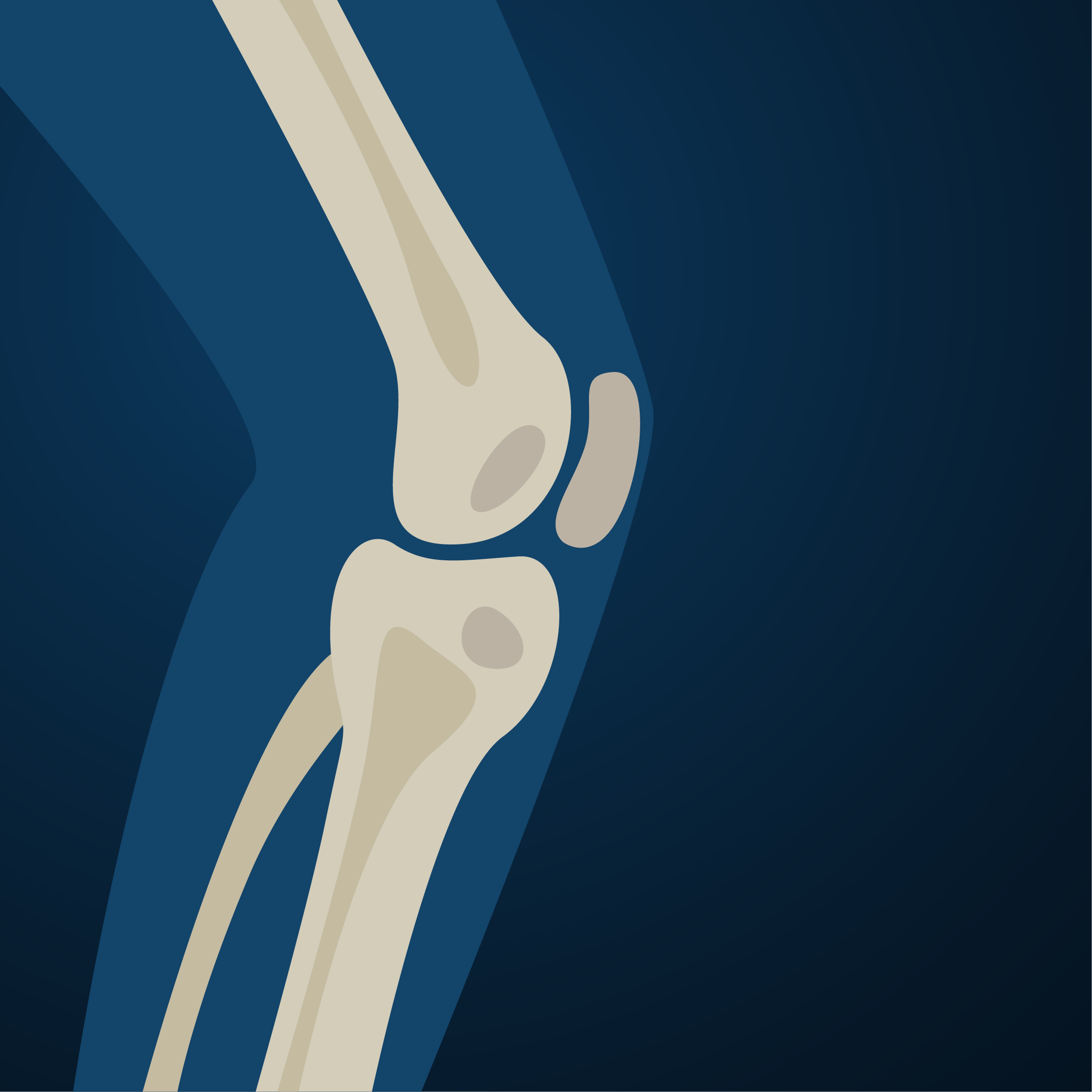
Torn Meniscus
Anatomy of the Meniscus
The meniscus is an important component of knee anatomy. It consists of two C-shaped pieces of cartilage located between the femur (thigh bone) and tibia (shin bone). Specifically, these structures are the medial meniscus (on the inner side of the knee) and the lateral meniscus (on the outer side). The menisci serve multiple functions, including distributing weight and reducing friction during movement, acting as shock absorbers, and stabilizing the knee joint.
Cartilage within the meniscus is composed of dense, fibrous tissue designed to handle compressive forces exerted during various activities such as walking, running, and jumping. These “bumpers” between the bones mitigate high contact pressures and contribute to the overall health of the knee joint by protecting the articular cartilage that covers the ends of the bones.
A torn meniscus is among the most common injuries that lead to an orthopedic evaluation for knee pain. They are typically acute injuries that happen when your foot is planted with weight bearing and you are twisting or changing directions. This is very common during participation in sports, but can happen during daily life as well.
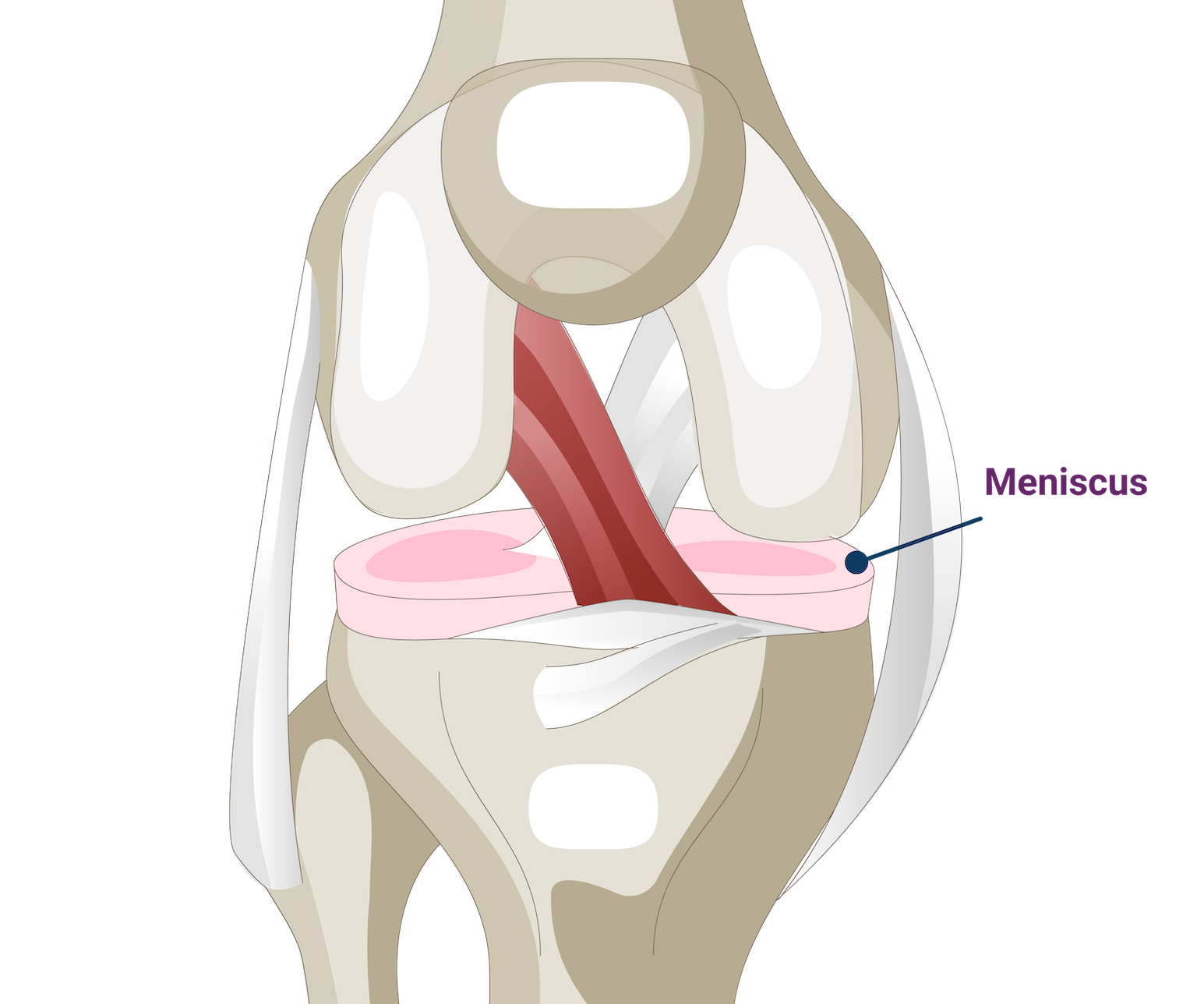
Torn Meniscus
Many of these injuries happen to athletes during participation in a sport the involves cutting or pivoting. They plant their foot to change directions and the meniscus tears as the two bones twist over one another. However, these injuries are common in non-athletes as well. The meniscus tissue degenerates with time and becomes weaker. This weaker tissue is not as tough as the normal meniscus and is susceptible to tearing during an awkward twist of the knee.
Tears of the menisci are a very common injury and cause of knee pain. Many patients actually feel a “tearing” sensation when the injury happens, but this is not always the case. The symptoms usually involve sharp, stabbing pain and stiffness of the knee. The knee may also feel locked or out of place, particularly during twisting or turning movements.
While some meniscus tears are symptomatic and cause significant pain, others may be incidental findings on imaging studies such as MRI. These incidental tears might not cause discomfort and are often discovered when investigating other sources of knee pain, such as arthritis. It is important to distinguish between tear-causing symptoms and those that are not to determine the appropriate treatment.
Symptoms Include:
- Pain which is usually sharp in nature
- Catching or hanging up of the knee
- Tightness and swelling
- Giving way or inability to bear weight
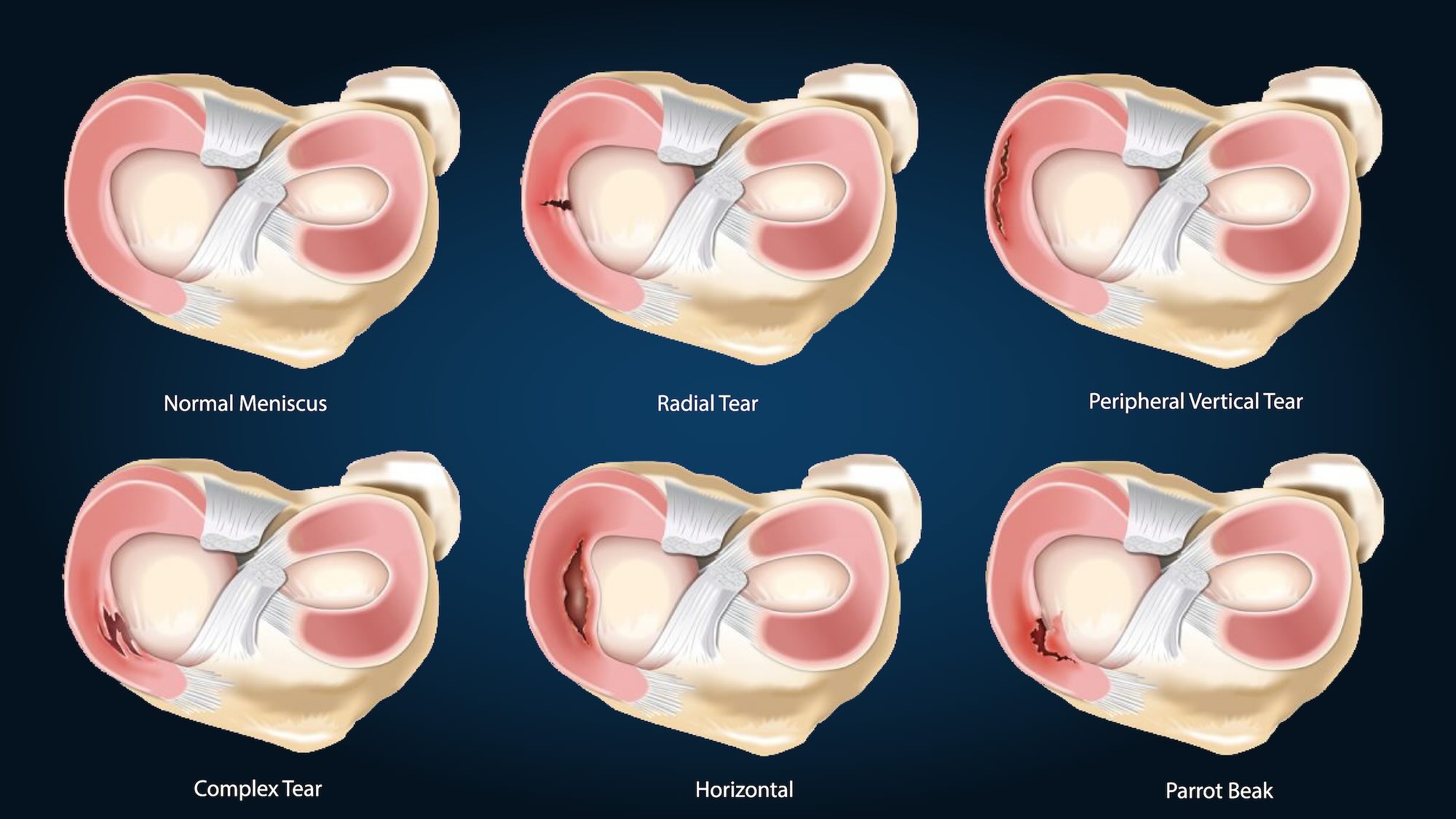
Types of Tears From Top Left to Right – Normal Meniscus, Radial Tear, Peripheral Vertical Tear (These are Often Repairable)
Bottom Left to Right – Complex Tear, Horizontal and Parrot Beak
Treatment
Treatment for a torn meniscus varies depending on the severity and symptoms of the tear. Non-surgical options may include rest, ice, compression, elevation (RICE), and physical therapy to strengthen the surrounding muscles and improve joint stability. Anti-inflammatory medications can also help manage pain and swelling.
Non-surgical: Some meniscal tears can be treated non-operatively, It really depends on the type of tear you have and whether or not it is causing sypmtoms. If the tear is very small and at the periphery of the meniscus, they often cause pain for a period of time and then settle down. These tears are typically managed with the standard R.I.C.E. program ( rest, ice, compression wrap, elevation) in the acute setting and then rehabilitated with the assistance of physical therapy.
Surgical intervention becomes necessary when meniscus tears are symptomatic, causing sharp pain, particularly with twisting or weight-bearing movements, and if the knee frequently buckles or gives way. Arthroscopic surgery is the most common procedure, which involves making small incisions in the knee to insert a camera and surgical instruments. Depending on the tear’s type and location, the surgeon can trim or repair the torn meniscus.
There are two basic options for treating meniscal tears: remove the torn fragment or repair the torn meniscus. Generally, the only tears that are repairable are tears at the periphery of the meniscus as this is the only part of the meniscus that has a blood supply. The central part of the meniscus does not have blood vessels and therefore does not have the ability to heal. In this situation, it is generally best to simply remove the torn fragment that is causing the pain. The photos below are examples of what a normal medial meniscus looks like through the arthroscopic camera and a medial meniscus with a parrot beak tear (unstable fragment). The final image is after removal of the fragment.
Surgery aims to relieve pain, restore knee function, and prevent further damage to the joint. Meniscal repairs are preferred over removal because preserving as much of the meniscus as possible is crucial for long-term knee health.
Recovery
Recovery from a meniscus tear treatment depends on the type of treatment administered. Non-surgical recovery typically involves a few weeks of physical therapy to strengthen the muscles around the knee and improve the joint’s range of motion. Patients are encouraged to gradually return to normal activities as pain and swelling subside.
The recovery process for those undergoing meniscus surgery generally involves a more structured rehabilitation program. Initially, patients may need to use crutches and wear a knee brace to limit movement and allow healing. Physical therapy starts with gentle exercises to regain range of motion and gradually progresses to more challenging activities aimed at restoring strength and stability.
Full recovery from meniscus surgery can take several months, but most patients can return to routine activities within 2 to 3 months post-operation. High-impact activities and sports may require a more extended recovery period, sometimes up to 6 months, to ensure the knee is adequately healed and strengthened to prevent re-injury.
Overall, the success of meniscus tear treatment relies heavily on early diagnosis, appropriate intervention, and adherence to rehabilitation protocols to ensure optimal knee function and prevent further complications.
Join Dr. Jones as he walks you through the steps of a Torn Meniscus:
"*" indicates required fields
Our Location
Dr. Christopher K. Jones, MD
4110 Briargate Parkway #300
Colorado Springs, Colorado 80920
Hours
Monday: 9am-5pm
Thursday 9am-5pm
Friday 9am-5pm

